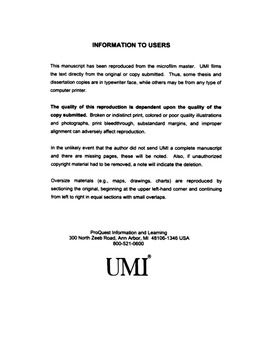| dc.contributor.advisor | Glatzhofer, Daniel T., | en_US |
| dc.contributor.author | Roy, Raymond Roger, Jr. | en_US |
| dc.date.accessioned | 2013-08-16T12:18:47Z | |
| dc.date.available | 2013-08-16T12:18:47Z | |
| dc.date.issued | 2002 | en_US |
| dc.identifier.uri | https://hdl.handle.net/11244/513 | |
| dc.description.abstract | These reactions can be carried out directly on aromatic amines (initial in situ acetanilide formation) to give aromatic acetates, and halides in good to excellent isolated yields. The mechanism, scope, potential utility of these reaction as well as the use of the nitrosamide as an initiator for polymerization reactions will be discussed in this dissertation. | en_US |
| dc.description.abstract | The conversion of aromatic amines to esters and phenols is a very useful transformation typically carried out using diazonium salt intermediates but the yields and product purity are highly variable. Aliphatic primary amides can be converted to esters via the corresponding N-nitrosamides but the reaction is of little utility. Little is known about the analogous reaction of primary amides derived from aromatic amines. It has been discovered that the reaction of aromatic amides with nitrite in a solution of acetic anhydride and acetic acid gives the corresponding esters in good to excellent yields. This reaction is functional group tolerant. Acetanilides, trifluoroacetanilides, and benzanilides gave the corresponding acetates, trifluoroacetates, and benzoates. These esters can be converted to the corresponding phenols easily and quantitatively. | en_US |
| dc.description.abstract | The introduction of halogens into aromatic compounds is an important synthetic procedure. Some of the present methods, in use today, require harsh conditions, provide a mixture of usually ortho or para halogenated products, or provide variable yields ranging from poor to excellent, depending on the substituent attached to the aromatic ring and/or the conditions the reaction is carried out. It has been discovered that the introduction of a suitable halogen source into the reaction sequence will allow the conversion of the aromatic secondary amides to aromatic halides in moderate to good yields under mild conditions. | en_US |
| dc.description.abstract | Formation of biphenyls though aromatic nitrosamides have been observed in the past but the nitrosamide either had to be synthesized under harsh conditions, or isolated first. It has been discovered that the introduction of a reactive solvent, methyl methacrylate, into this reaction sequence developed for the formation of esters resulted in polymerization of methyl methacrylate. Changing the reactive solvent to benzene has allowed the formation of biaryls under mild conditions without isolating the aromatic nitrosamide. In some cases, when benzoic acid is added to the reaction, deamination has occurred. In one case, with 1,8-bis(N-acetamido)naphthalene, when benzoic acid was added to the reaction the formation of perylene occurred. | en_US |
| dc.format.extent | xvii, 222 leaves : | en_US |
| dc.subject | Amines. | en_US |
| dc.subject | Nitrosamides. | en_US |
| dc.subject | Chemistry, Organic. | en_US |
| dc.subject | Biphenyl compounds. | en_US |
| dc.subject | Esters. | en_US |
| dc.title | Conversion of aromatic amines and N-aromatic amides to O-aromatic esters, biphenyls, aromatic halides and energetic materials via nitrosamide intermediates. | en_US |
| dc.type | Thesis | en_US |
| dc.thesis.degree | Ph.D. | en_US |
| dc.thesis.degreeDiscipline | Department of Chemistry and Biochemistry | en_US |
| dc.note | Director: Daniel T. Glatzhofer. | en_US |
| dc.note | Source: Dissertation Abstracts International, Volume: 63-08, Section: B, page: 3724. | en_US |
| ou.identifier | (UMI)AAI3063956 | en_US |
| ou.group | College of Arts and Sciences::Department of Chemistry and Biochemistry | |
